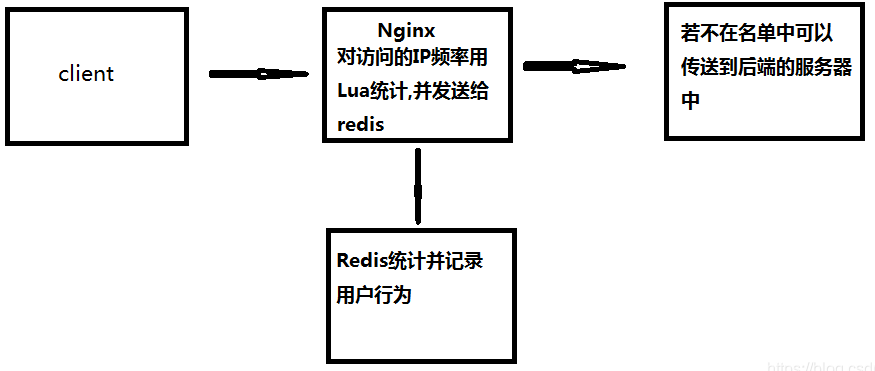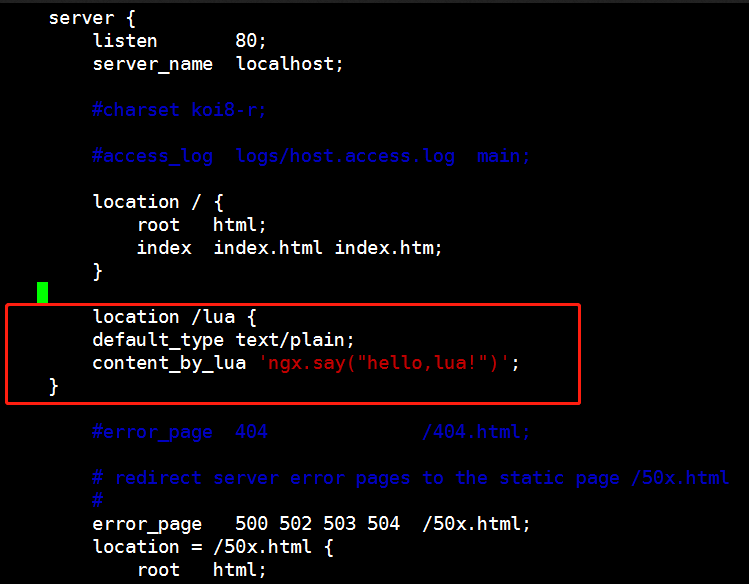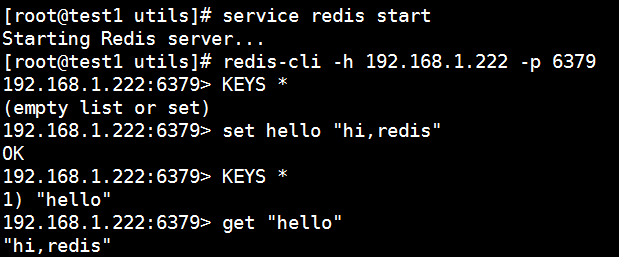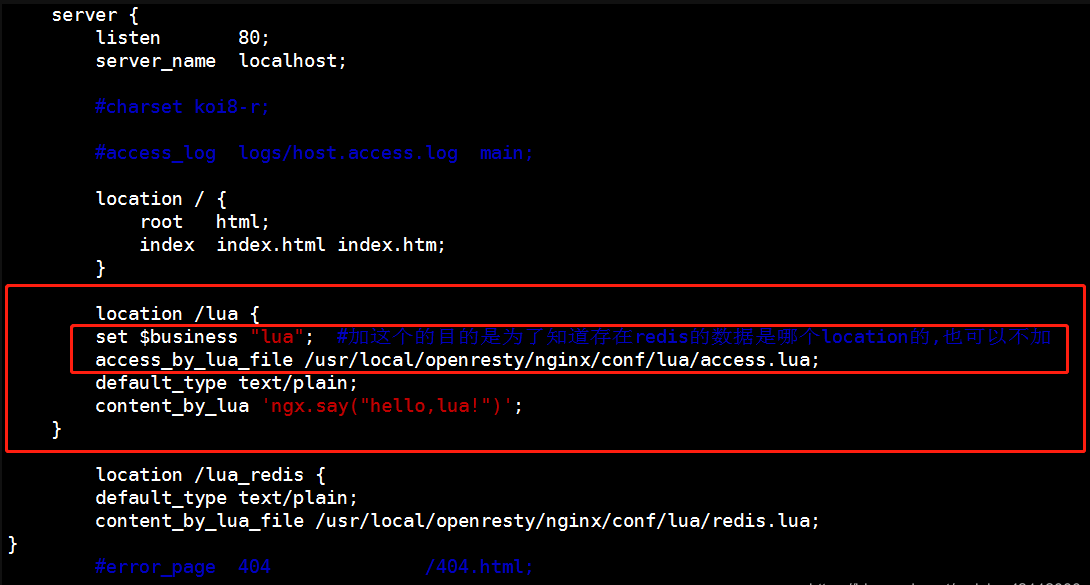# 《Nginx核心技术》第20章:Nginx+Lua脚本+Redis实现自动封禁访问频率过高IP
作者:冰河
星球:http://m6z.cn/6aeFbs (opens new window)
博客:https://binghe.gitcode.host (opens new window)
文章汇总:https://binghe.gitcode.host/md/all/all.html (opens new window)
星球项目地址:https://binghe.gitcode.host/md/zsxq/introduce.html (opens new window)
沉淀,成长,突破,帮助他人,成就自我。
- 本章难度:★★★☆☆
- 本章重点:用最简短的篇幅介绍Nginx最核心的知识,以实际案例的形式讲述Nginx的核心知识,让大家掌握在实际项目场景下,如何使用nginx/OpenResty+Lua抵御攻击流量。
大家好,我是冰河~~
自己搭建的网站刚上线,短信接口就被一直攻击,并且攻击者不停变换IP,导致阿里云短信平台上的短信被恶意刷取了几千条,加上最近工作比较忙,就直接在OpenResty上对短信接口做了一些限制,采用OpenResty+Lua的方案成功动态封禁了频繁刷短信接口的IP。
# 一、临时解决方案
由于事情比较紧急,所以,当发现这个问题时,就先采用快速的临时方案解决。
(1)查看Nginx日志发现被攻击的IP 和接口
[root@binghe ~]# tail -f /var/log/nginx/access.log
发现攻击者一直在用POST请求 /fhtowers/user/getVerificationCode这个接口

(2)用awk和grep脚本过滤nginx日志,提取攻击短信接口的ip(一般这个接口是用来发注册验证码的,一分钟如果大于10次请求的话就不是正常的访问请求了,大家根据自己的实际情况更改脚本)并放到一个txt文件中去,然后重启nginx
[root@binghe ~]# cat denyip.sh
#!/bin/bash
nginx_home=/usr/local/openresty/nginx
log_path=/var/log/nginx/access.log
tail -n5000 $log_path | grep getVerification | awk '{print $1}' |sort | uniq -c | sort -nr -k1 | head -n 100 |awk '{if($1>10)print ""$2""}' >$nginx_home/denyip/blocksip.txt
/usr/bin/nginx -s reload
2
3
4
5
6
(3)设置Nginx去读取用脚本过滤出来的blocksip.txt(注意一下,我这里的Nginx是用的openresty,自带识别lua语法的,下面会有讲openresty的用法)
location = /fhtowers/user/getVerificationCode { #短信接口
access_by_lua '
local f = io.open("/usr/local/openresty/nginx/denyip/blocksip.txt") #黑名单列表
for line in f:lines() do
if ngx.var.http_x_forwarded_for == line then #如果ip在黑名单列表里直接返回403
ngx.exit(ngx.HTTP_FORBIDDEN)
end
end
';
proxy_pass http://appservers; #不在名单里就转发给后台的tomcat服务器
}
2
3
4
5
6
7
8
9
10
11
(4)把过滤脚本放进crontab任务里,一分钟执行一次
[root@binghe ~]# crontab -e
*/1 * * * * sh /root/denyip.sh
2
(5)查看一下效果,发现攻击者的请求都被返回403并拒绝了

# 二、OpenResty+Lua方案
临时方案有效果后,再将其调整成使用OpenResty+Lua脚本的方案,来一张草图。

接下来,就是基于OpenResty和Redis实现自动封禁访问频率过高的IP。
# 2.1 安装OpenResty
安装使用 OpenResty,这是一个集成了各种 Lua 模块的 Nginx 服务器,是一个以Nginx为核心同时包含很多第三方模块的Web应用服务器,使用Nginx的同时又能使用lua等模块实现复杂的控制。
(1)安装编译工具、依赖库
[root@test1 ~]# yum -y install readline-devel pcre-devel openssl-devel gcc
(2)下载openresty-1.13.6.1.tar.gz 源码包,并解压;下载ngx_cache_purge模块,该模块用于清理nginx缓存;下载nginx_upstream_check_module模块,该模块用于ustream健康检查。
[root@test1 ~]# cd /usr/local/
[root@test1 local]# wget https://openresty.org/download/openresty-1.13.6.1.tar.gz
[root@test1 local]# tar -zxvf openresty-1.13.6.1.tar.gz
[root@test1 local]# cd openresty-1.13.6.1/bundle
[root@test1 local]# wget http://labs.frickle.com/files/ngx_cache_purge-2.3.tar.gz
[root@test1 local]# tar -zxvf ngx_cache_purge-2.3.tar.gz
[root@test1 local]# wget https://github.com/yaoweibin/nginx_upstream_check_module/archive/v0.3.0.tar.gz
[root@test1 local]# tar -zxvf v0.3.0.tar.gz
2
3
4
5
6
7
8
(3)配置需安装的模块
# ./configure --help可查询需要安装的模块并编译安装
[root@test1 openresty-1.13.6.1]# ./configure --prefix=/usr/local/openresty --with-luajit --with-http_ssl_module --user=root --group=root --with-http_realip_module --add-module=./bundle/ngx_cache_purge-2.3/ --add-module=./bundle/nginx_upstream_check_module-0.3.0/ --with-http_stub_status_module
[root@test1 openresty-1.13.6.1]# make && make install
2
3
(4)创建一个软链接方便启动停止
[root@test1 ~]# ln -s /usr/local/openresty/nginx/sbin/nginx /bin/nginx
(5)启动nginx
[root@test1 ~]# nginx #启动
[root@test1 ~]# nginx -s reload #reload配置
2
如果启动时候报错找不到PID的话就用以下命令解决(如果没有更改过目录的话,让它去读nginx的配置文件就好了)
[root@test1 ~]# /usr/local/openresty/nginx/sbin/nginx -c /usr/local/openresty/nginx/conf/nginx.conf

随后,打开浏览器访问页面。

(6)在Nginx上测试一下能否使用Lua脚本
[root@test1 ~]# vim /usr/local/openresty/nginx/conf/nginx.conf
在server里面加一个
location /lua {
default_type text/plain;
content_by_lua ‘ngx.say(“hello,lua!”)’;
}
2
3
4

加完后重新reload配置。
[root@test1 ~]# nginx -s reload
在浏览器里输入 ip地址/lua,出现下面的字就表示Nginx能够成功使用lua了

# 2.2 安装Redis
(1)下载、解压、编译安装
[root@test1 ~]# cd /usr/local/
[root@test1 local]# wget http://download.redis.io/releases/redis-6.0.1.tar.gz
[root@test1 local]# tar -zxvf redis-6.0.1.tar.gz
[root@test1 local]# cd redis-6.0.1
[root@test1 redis-6.0.1]# make
[root@test1 redis-6.0.1]# make install
2
3
4
5
6
(2)查看是否安装成功
[root@test1 redis-6.0.1]# ls -lh /usr/local/bin/
[root@test1 redis-6.0.1]# redis-server -v
Redis server v=3.2.5 sha=00000000:0 malloc=jemalloc-4.0.3 bits=64 build=dae2abf3793b309d
2
3
(3)配置redis 创建dump file、进程pid、log目录
[root@test1 redis-6.0.1]# cd /etc/
[root@test1 etc]# mkdir redis
[root@test1 etc]# cd /var/
[root@test1 var]# mkdir redis
[root@test1 var]# cd redis/
[root@test1 redis]# mkdir data log run
2
3
4
5
6
(4)修改配置文件
[root@test1 redis]# cd /usr/local/redis-6.0.1/
[root@test1 redis-6.0.1]# cp redis.conf /etc/redis/6379.conf
[root@test1 redis-6.0.1]# vim /etc/redis/6379.conf
#绑定的主机地址
bind 192.168.1.222
#端口
port 6379
#认证密码(方便测试不设密码,注释掉)
#requirepass
#pid目录
pidfile /var/redis/run/redis_6379.pid
#log存储目录
logfile /var/redis/log/redis.log
#dump目录
dir /var/redis/data
#Redis默认不是以守护进程的方式运行,可以通过该配置项修改,使用yes启用守护进程
daemonize yes
2
3
4
5
6
7
8
9
10
11
12
13
14
15
16
17
(5)设置启动方式
[root@test1 redis-6.0.1]# cd /usr/local/redis-6.0.1/utils/
[root@test1 utils]# cp redis_init_script /etc/init.d/redis
[root@test1 utils]# vim /etc/init.d/redis #根据自己实际情况修改
2
3
/etc/init.d/redis文件的内容如下。
#!/bin/sh
#
# Simple Redis init.d script conceived to work on Linux systems
# as it does use of the /proc filesystem.
REDISPORT=6379
EXEC=/usr/local/bin/redis-server
CLIEXEC=/usr/local/bin/redis-cli
PIDFILE=/var/run/redis_${REDISPORT}.pid
CONF="/etc/redis/${REDISPORT}.conf"
case "$1" in
start)
if [ -f $PIDFILE ]
then
echo "$PIDFILE exists, process is already running or crashed"
else
echo "Starting Redis server..."
$EXEC $CONF
fi
;;
stop)
if [ ! -f $PIDFILE ]
then
echo "$PIDFILE does not exist, process is not running"
else
PID=$(cat $PIDFILE)
echo "Stopping ..."
$CLIEXEC -p $REDISPORT shutdown
while [ -x /proc/${PID} ]
do
echo "Waiting for Redis to shutdown ..."
sleep 1
done
echo "Redis stopped"
fi
;;
*)
echo "Please use start or stop as first argument"
;;
esac
2
3
4
5
6
7
8
9
10
11
12
13
14
15
16
17
18
19
20
21
22
23
24
25
26
27
28
29
30
31
32
33
34
35
36
37
38
39
40
41
42
增加执行权限,并启动Redis。
[root@test1 utils]# chmod a+x /etc/init.d/redis #增加执行权限
[root@test1 utils]# service redis start #启动redis
2
(6)查看redis是否启动

# 2.3 Lua访问Redis
(1)连接redis,然后添加一些测试参数
[root@test1 utils]# redis-cli -h 192.168.1.222 -p 6379
192.168.1.222:6379> set "123" "456"
OK
2
3
(2)编写连接Redis的Lua脚本
[root@test1 utils]# vim /usr/local/openresty/nginx/conf/lua/redis.lua
local redis = require "resty.redis"
local conn = redis.new()
conn.connect(conn, '192.168.1.222', '6379') #根据自己情况写ip和端口号
local res = conn:get("123")
if res==ngx.null then
ngx.say("redis集群中不存在KEY——'123'")
return
end
ngx.say(res)
2
3
4
5
6
7
8
9
10
(3)在nginx.conf配置文件中的server下添加以下location
[root@test1 utils]# vim /usr/local/openresty/nginx/conf/nginx.conf
location /lua_redis {
default_type text/plain;
content_by_lua_file /usr/local/openresty/nginx/conf/lua/redis.lua;
}
2
3
4
5
随后重新reload配置。
[root@test1 utils]# nginx -s reload #重启一下Nginx
(4)验证Lua访问Redis的正确性
在浏览器输入ip/lua_redis, 如果能看到下图的内容表示Lua可以访问Redis。

准备工作已经完成,现在要实现OpenResty+Lua+Redis自动封禁并解封IP了。
# 2.4 OpenResty+Lua实现
(1)添加访问控制的Lua脚本(只需要修改Lua脚本中连接Redis的IP和端口即可)
ok, err = conn:connect(“192.168.1.222”, 6379)
注意:如果在Nginx或者OpenResty的上层有用到阿里云的SLB负载均衡的话,需要修改一下脚本里的所有…ngx.var.remote_addr,把remote_addr替换成从SLB获取真实IP的字段即可,不然获取到的IP全都是阿里云SLB发过来的并且是处理过的IP,同时,这些IP全都是一个网段的,根本没有办法起到封禁的效果)。
完整的Lua脚本如下所示。
[root@test1 lua]# vim /usr/local/openresty/nginx/conf/lua/access.lua
local ip_block_time=300 --封禁IP时间(秒)
local ip_time_out=30 --指定ip访问频率时间段(秒)
local ip_max_count=20 --指定ip访问频率计数最大值(秒)
local BUSINESS = ngx.var.business --nginx的location中定义的业务标识符,也可以不加,不过加了后方便区分
--连接redis
local redis = require "resty.redis"
local conn = redis:new()
ok, err = conn:connect("192.168.1.222", 6379)
conn:set_timeout(2000) --超时时间2秒
--如果连接失败,跳转到脚本结尾
if not ok then
goto FLAG
end
--查询ip是否被禁止访问,如果存在则返回403错误代码
is_block, err = conn:get(BUSINESS.."-BLOCK-"..ngx.var.remote_addr)
if is_block == '1' then
ngx.exit(403)
goto FLAG
end
--查询redis中保存的ip的计数器
ip_count, err = conn:get(BUSINESS.."-COUNT-"..ngx.var.remote_addr)
if ip_count == ngx.null then --如果不存在,则将该IP存入redis,并将计数器设置为1、该KEY的超时时间为ip_time_out
res, err = conn:set(BUSINESS.."-COUNT-"..ngx.var.remote_addr, 1)
res, err = conn:expire(BUSINESS.."-COUNT-"..ngx.var.remote_addr, ip_time_out)
else
ip_count = ip_count + 1 --存在则将单位时间内的访问次数加1
if ip_count >= ip_max_count then --如果超过单位时间限制的访问次数,则添加限制访问标识,限制时间为ip_block_time
res, err = conn:set(BUSINESS.."-BLOCK-"..ngx.var.remote_addr, 1)
res, err = conn:expire(BUSINESS.."-BLOCK-"..ngx.var.remote_addr, ip_block_time)
else
res, err = conn:set(BUSINESS.."-COUNT-"..ngx.var.remote_addr,ip_count)
res, err = conn:expire(BUSINESS.."-COUNT-"..ngx.var.remote_addr, ip_time_out)
end
end
-- 结束标记
::FLAG::
local ok, err = conn:close()
2
3
4
5
6
7
8
9
10
11
12
13
14
15
16
17
18
19
20
21
22
23
24
25
26
27
28
29
30
31
32
33
34
35
36
37
38
39
40
41
42
43
44
45
(2)在需要做访问限制的location里加两段代码即可,这里用刚才的/lua做演示
[root@test1 lua]# vim /usr/local/openresty/nginx/conf/nginx.conf

主要是添加如下配置。
access_by_lua_file /usr/local/openresty/nginx/conf/lua/access.lua;
其中,set $business “lua” 是为了把IP放进Redis的时候标明是哪个location的,可以不加这个配置。
随后,重新reload配置。
[root@test1 lua]# nginx -s reload #修改完后重启nginx
(3)打开浏览器访问192.168.1.222/lua 并一直按F5刷新。

随后,连接Redis,查看IP的访问计数。
[root@test1 ~]# redis-cli -h 192.168.1.222 -p 6379
发现redis已经在统计访问lua这个网页ip的访问次数了

这个key的过期时间是30秒,如果30秒没有重复访问20次这个key就会消失,所以说正常用户一般不会触发这个封禁的脚本。

当30秒内访问超过了20次,发现触发脚本了,变成了403

再次查看Redis的key,发现多了一个lua-block-192.168.1.158,过期时间是300秒,就是说在300秒内这个ip无法继续访问192.168.1.222/lua这个页面了。

过五分钟后再去访问这个页面,又可以访问了。

这个脚本的目的很简单:一个IP如果在30秒内其访问次数达到20次则表明该IP访问频率太快了,因此将该IP封禁5分钟。同时由于计数的KEY在Redis中的超时时间设置成了30秒,所以如果两次访问间隔时间大于30秒将会重新开始计数。
大家也可以将这个脚本优化成,第一次封禁5分钟,第二次封禁半小时,第三次封禁半天,第四次封禁三天,第五次永久封禁等等。
# 三、写在最后
在冰河的知识星球除了目前正在热更的高性能网关外,还有其他6个项目,像分布式IM即时通讯系统、Sekill分布式秒杀系统、手写RPC、简易商城系统等等。这些项目的需求、方案、架构、落地等均来自互联网真实业务场景,让你真正学到互联网大厂的业务与技术落地方案,并将其有效转化为自己的知识储备。
值得一提的是:冰河自研的Polaris高性能网关比某些开源网关项目性能更高,你还在等啥?不少小伙伴经过星球硬核技术和项目的历练,早已成功跳槽加薪,实现薪资翻倍,而你,还在原地踏步,抱怨大环境不好。2024年抛弃焦虑和抱怨,我们一起塌下心来沉淀硬核技术和项目,让自己的薪资更上一层楼。

领券加入星球,就可以跟冰河一起学习《简易商城脚手架项目》、《手撸RPC专栏》和《Spring6核心技术与源码解析》、《实战高并发设计模式》、《分布式Seckill秒杀系统》、《分布式IM即时通讯系统》和《高性能Polaris网关》,从零开始介绍原理、设计架构、手撸代码。
花很少的钱就能学这么多硬核技术、中间件项目和大厂秒杀系统与分布式IM即时通讯系统,比其他培训机构不知便宜多少倍,硬核多少倍,如果是我,我会买他个十年!
加入要趁早,后续还会随着项目和加入的人数涨价,而且只会涨,不会降,先加入的小伙伴就是赚到。
另外,还有一个限时福利,邀请一个小伙伴加入,冰河就会给一笔 分享有奖 ,有些小伙伴都邀请了50+人,早就回本了!
其他方式加入星球:
- 链接 :打开链接 http://m6z.cn/6aeFbs 加入星球。
- 回复 :在公众号 冰河技术 回复 星球 领取优惠券加入星球。
特别提醒: 苹果用户进圈或续费,请加微信 hacker_binghe 扫二维码,或者去公众号 冰河技术 回复 星球 扫二维码加入星球。
好了,今天就到这儿吧,我是冰河,我们下期见~~
